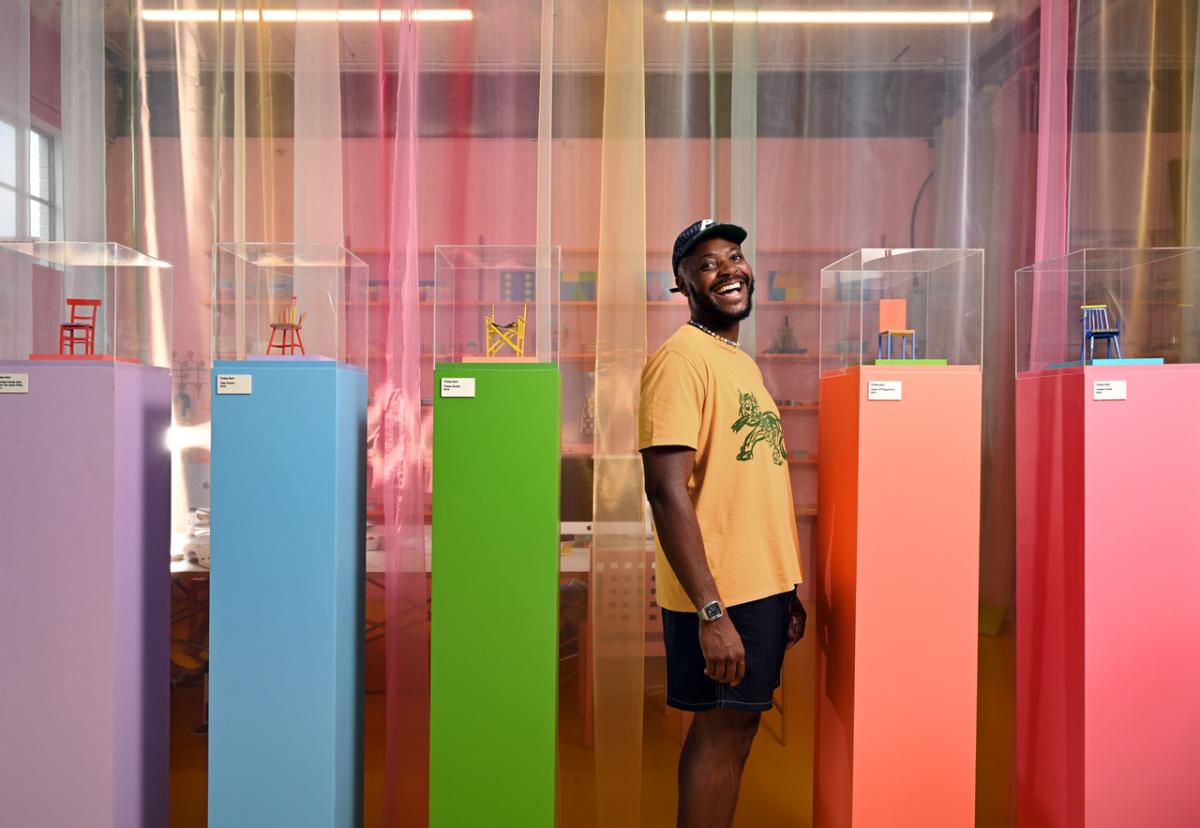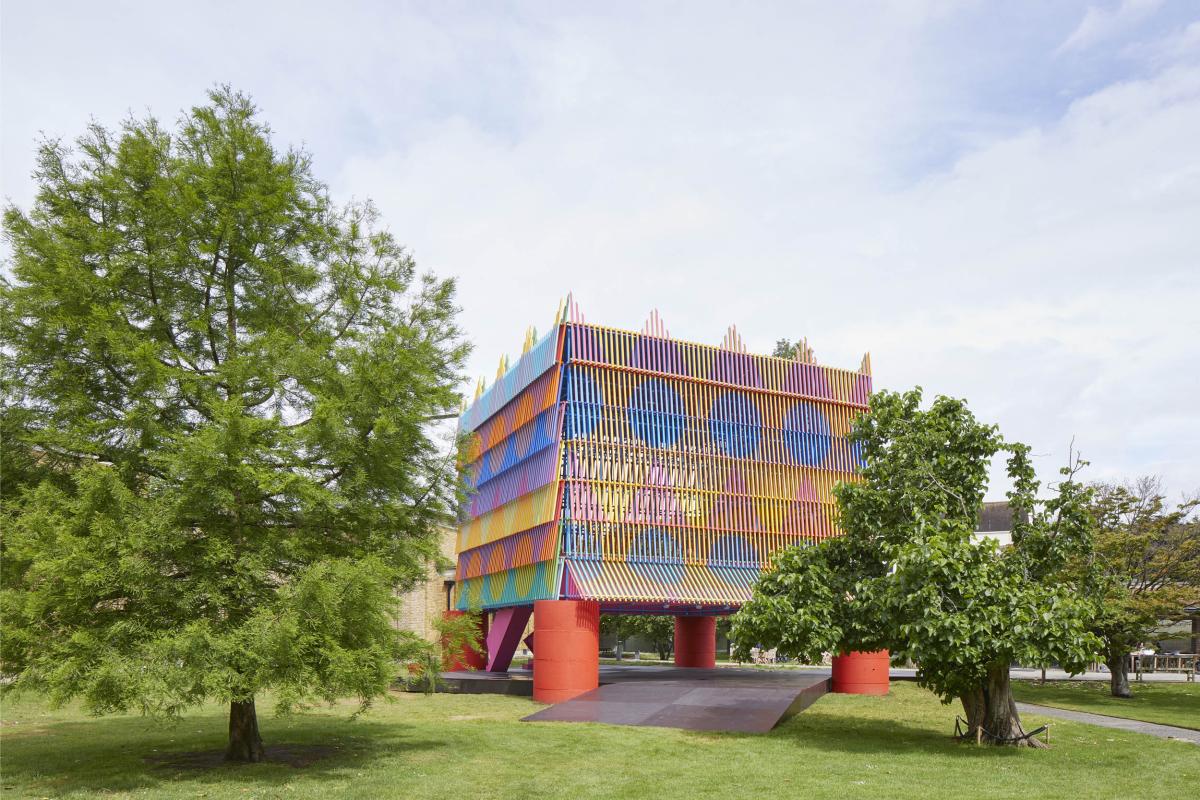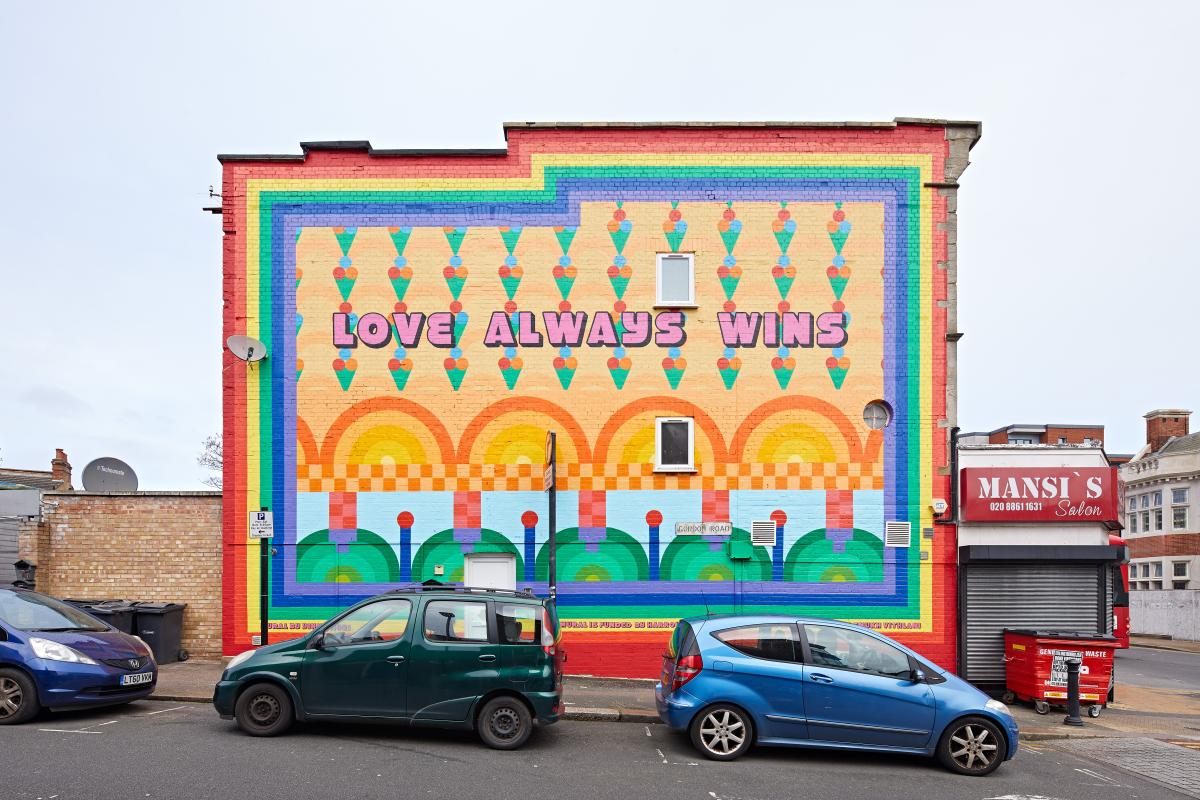This wonderful Cornish workshop and museum is dedicated to the legacy of studio pottery trailblazer Bernard Leach
7 things Yinka Ilori told us
7 things Yinka Ilori told us
8 Nov 2022
In our new issue of The Arts Society Magazine, Sue Herdman interviews one of the most colourful figures on the contemporary arts scene – artist and designer Yinka Ilori. Here are seven things he told us
 Yinka Ilori in his London studio. Portrait by John Millar
Yinka Ilori in his London studio. Portrait by John Millar
1. ‘Design and craft have the power to really impact people and communities…’
…and Ilori should know. Famed for his use of colour and his sense of joy, his work lifts surprising locations, from urban playgrounds to hospital waiting rooms. In the past decade he has gone from creating (extraordinary) chairs, to ‘pop-up’ architecture and installations here and abroad. Each work sings with verve and hope. Among them is his soaring Love Always Wins high-street mural, for London’s Harrow Council – a sight to bring fizz to any gloomy day – and his temporary billboard in Blackfriars, a pandemic commission in support of the National Health Service. In purples, bubble-gum pinks, yellows and greens, it soothed with the words Better Days Are Coming I Promise.
 Ilori’s Colour Palace at Dulwich Picture Gallery. Image: Andy Stagg
Ilori’s Colour Palace at Dulwich Picture Gallery. Image: Andy Stagg
2. ‘Not everyone is comfortable with my work’
Ilori’s works are playful yet underpinned with serious intent. His 2019 Colour Palace, the temporary pavilion designed for London’s Dulwich Picture Gallery, was a fusion of European and African cultural traditions, inspired by the energy and hues of a Nigerian marketplace. Its juxtaposition with England’s oldest gallery, designed by architect Sir John Soane, was a brilliant touch. ‘Yet some were uncomfortable with it,’ Ilori reveals. ‘They thought it didn’t fit in. But isn’t that how some people – and children – feel about our museums and galleries? That they don’t belong in them? The pavilion, though, was for everyone.’
3. Ilori likes to see mistakes made…
…and he’s not being obtuse. When, as a trustee of the Crafts Council, he initiated the recent Craft School: Yinka’s Challenge – with the aim of getting children involved in design and making – he encouraged children taking part to take risks and run the gamut of errors and miscalculations. ‘Mistakes lead to new ways of thinking; they should be applauded and the child reassured,’ he states, adding: ‘We all need to learn we shouldn’t rush to perfection.’
 Ilori’s Flamboyance of Flamingo playground, Parsloes Park, London. Image: Thierry Bal
Ilori’s Flamboyance of Flamingo playground, Parsloes Park, London. Image: Thierry Bal
4. He sees how powerful craft is for children – and play can be for adults
‘Having time to come together with others, collaborate, share ideas and dream when we are children is incredibly important. It shapes how we experience the world; it teaches us to work together.’ He also notes how, ‘when we grow up, we feel we shouldn’t be playful, but it’s vital to reconnect with that side of ourselves’. Ilori’s own childhood was full of play and his continuing connection to its power is, he laughs, ‘the Nigerian in me. The Nigerians are go-getters. If there is a pocket of joy, they will find it.’
5. He wants us to view the bigger picture in arts education
‘We need to move away from thinking that talent can only be found in art schools,’ he says. ‘There are gifted people all around us; we must find new ways for emerging creatives to enter the industry regardless of educational background.’
6. He recognises the might of the school art room
‘It’s a space where kids aren’t going to be judged. There isn’t really a hierarchy. Everyone is creative and there is no best or worst artist or design. So it’s a safe place where a child can feel included, where they can express themselves in their own way.’
 Love Always Wins mural, Harrow. Credit: Image: Andy Stagg
Love Always Wins mural, Harrow. Credit: Image: Andy Stagg
7. Lockdowns moved his views on design
‘When, over lockdowns, I started creating the public realm pieces, it was about bringing joy in a difficult time,’ Ilori says. ‘It changed the way I saw design and what creating accessible design can do. Sometimes designers focus on the practical element of design – in furniture, say, or a building – but for me it should also be a tool for joy and storytelling. Society and communities are facing immense challenges at this time. I want to use my work to bring some relief, playfulness and joy.’
Read
See our whole interview with Yinka Ilori in the latest issue of The Arts Society Magazine, out now and available exclusively to members and supporters of The Arts Society (to join, see theartssociety.org/member-benefits).
See
Yinka Ilori: Parables for Happiness
A free display at The Design Museum, highlighting aspects of Ilori’s work through 100 objects.
Until 25 June 2023
For more on Yinka Ilori’s work
Go to yinkailori.com
For more on Craft School: Yinka’s Challenge
See craftscouncil.org.uk and tap in ‘Craft School Yinka’s Challenge’
About the Author
Sue Herdman
Sue Herdman is an arts and culture journalist and Editor of The Arts Society Magazine
JOIN OUR MAILING LIST
Become an instant expert!
Find out more about the arts by becoming a Supporter of The Arts Society.
For just £20 a year you will receive invitations to exclusive member events and courses, special offers and concessions, our regular newsletter and our beautiful arts magazine, full of news, views, events and artist profiles.
FIND YOUR NEAREST SOCIETY
MORE FEATURES
Ever wanted to write a crime novel? As Britain’s annual crime writing festival opens, we uncover some top leads
It’s just 10 days until the Summer Olympic Games open in Paris. To mark the moment, Simon Inglis reveals how art and design play a key part in this, the world’s most spectacular multi-sport competition



